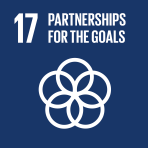Globalization, regionalization and the development challenge

- Author: United Nations Conference on Trade and Development
- Main Title: Trade and Development Report 2007 , pp 35-51
- Publication Date: April 2007
- DOI: https://doi.org/10.18356/8ee5b227-en
- Language: English
Developing countries seek to integrate into the world economy in the expectation that this will help raise productivity levels, improve growth prospects and boost living standards through increased trade, technology and capital flows. Most observers recognize, however, that deriving such benefits from “external integration” is contingent on a number of preconditions, including a certain level of local production capacity, skills and technological sophistication, an array of market supporting institutions and good infrastructure. Establishing such conditions is closely tied to a process of “internal integration” associated with expanding domestic markets, a shifting pattern of employment away from rural activities, and an increasing industrial division of labour that leads to a dense network of input-output linkages between sectors. Strong institutions are also required to forge the socio-political consensus needed to mobilize and channel resources to productive investment and to manage trade-offs incurred along a dynamic development path, including those arising from increased external integration. Accordingly, encompassing political structures, closely associated – but not synonymous – with democratic governance, make up the final component of most development strategies.
-
From This Site
/content/books/9789211560152c007dcterms_title,dcterms_subject,pub_keyword-contentType:Journal -contentType:Contributor -contentType:Concept -contentType:Institution105


